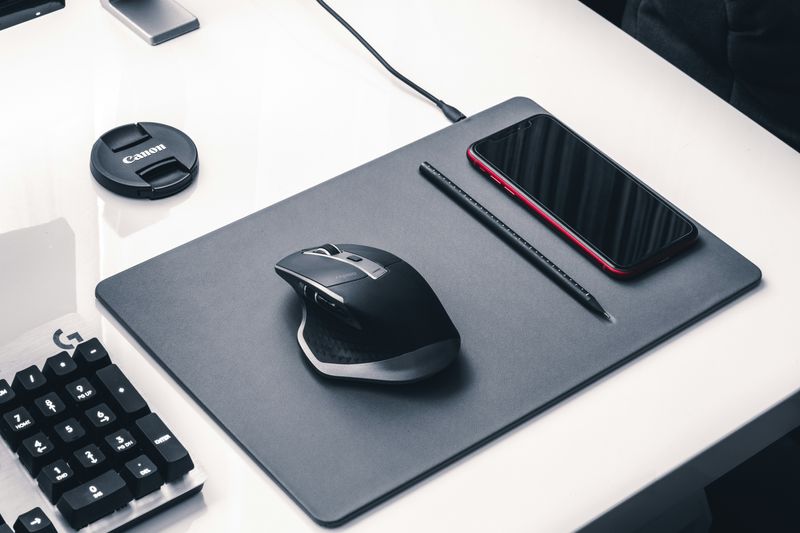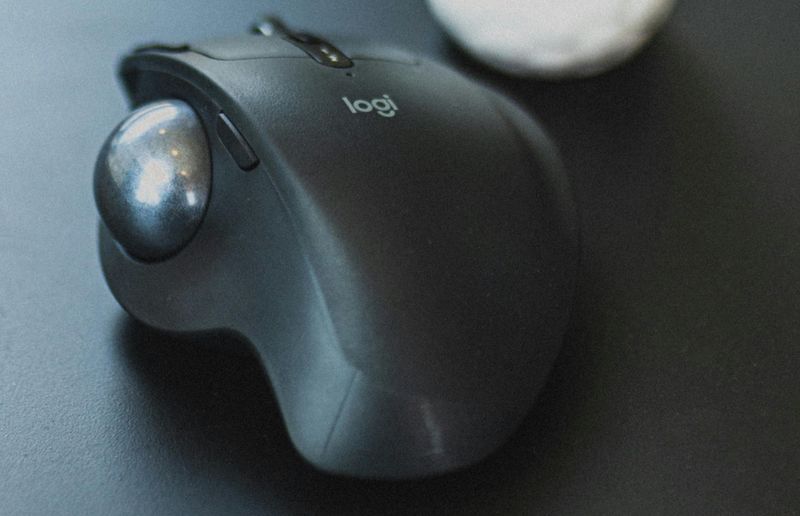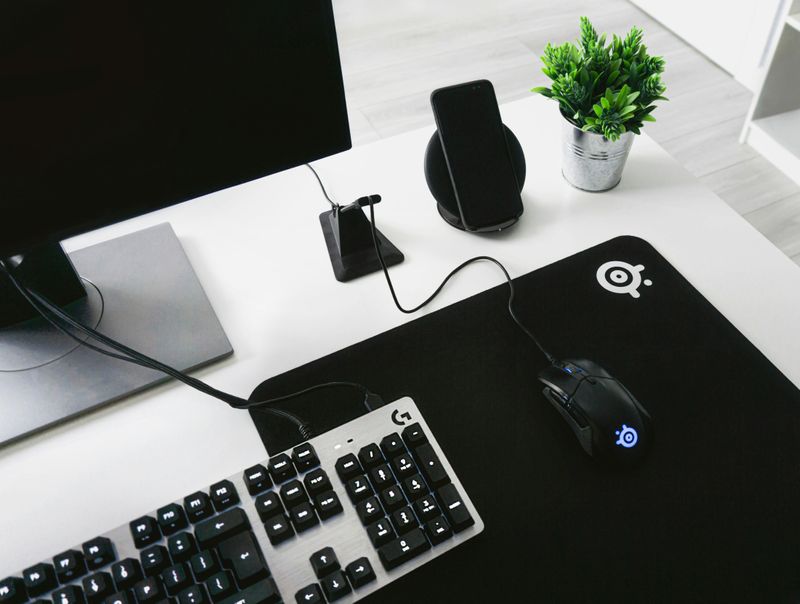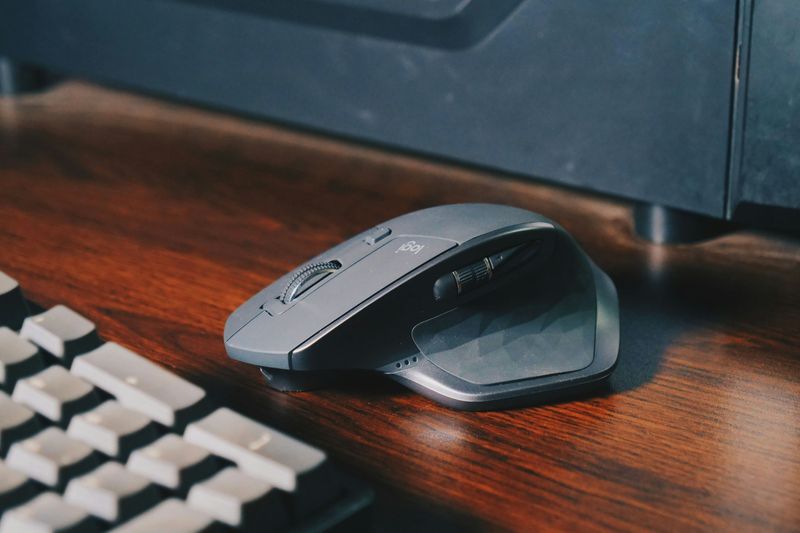You probably use a computer mouse every day but might not have thought about its importance — until it stops working. Maybe you need a better mouse for editing photos and videos, or maybe you notice hand and wrist strain after a long session of mouse use.
 It's easy to replace a worn-out mouse with a new one just like it, but choosing the right one will give you a better online experience for work and relaxation.
It's easy to replace a worn-out mouse with a new one just like it, but choosing the right one will give you a better online experience for work and relaxation.
How Will You Use It?
If you want a basic mouse to web surf and work on school assignments, any model that feels comfortable in your hand will work. If you spend hours with a mouse or have a specific use case, there are mice made for the following uses and more:
Productivity
Gaming
Hand/wrist comfort (ergonomic)
Travel
Creative work (such as photo editing)
Quiet work (softer click noises)
Choosing a Size and Shape
The right mouse for your hand size should rest comfortably in your palm and not be so tall that your wrist is up at an uncomfortable angle.
Test a few sizes and shapes to pick the one that is the best for you.
Ambidextrous
Ambidextrous mice are meant to fit well in either hand, and the overall shape is the same on both sides. They may or may not be ergonomically designed.
 Photo by Yasin Hasan on Unsplash
Photo by Yasin Hasan on UnsplashErgonomic
Ergonomic mice come in many shapes, but they are usually asymmetrical and fit either the left or right hand. They are designed to reduce arm, hand, and wrist strain.
 Photo by Sebastian Bednarek on Unsplash
Photo by Sebastian Bednarek on UnsplashTrackball
With this mouse, you control the cursor by moving a ball that is set in a stationary base. Some mice have both a trackball and a scroll wheel.
 Photo by Matheus Bertelli via Pexels
Photo by Matheus Bertelli via Pexels
Vertical
This is a type of ergonomic mouse where the hand is vertical in a handshake-like position. Vertical mice are made for either the left or right hand, not both.
 Photo by Howard Bouchevereau on Unsplash
Photo by Howard Bouchevereau on UnsplashChoosing a Tracking Method
Computer mice use three main ways to translate your movements into the movements you see on a screen.
Optical
This mouse uses light to track movement. It works best on a mousepad or other flat surface with a bit of texture.
Best for: Basic computer use, schoolwork, casual gaming
Not best for: Competitive gaming, precision computer work, uneven surfaces
Laser
This mouse is extra sensitive to movement and can work on smooth surfaces such as glass.
Best for: Competitive gaming, precision computer work, glass or uneven surfaces
Not best for: Basic computer use, when you probably wouldn't notice the difference between a laser and an optical mouse
Mechanical
This mouse uses a ball on the underside of the mouse. When the ball rolls, it sends signals to the computer.
Best for: Uneven or dusty surfaces, users who like the feel of the rolling ball
Not best for: Precision tasks, users who don't want loud clicking sounds
Choosing a Sensitivity Range
Dots Per Inch (DPI) or Counts Per Inch (CPI)
DPI, also known as CPI, measures how responsive the cursor is to mouse movement. A low DPI means that the cursor won't respond to small mouse movements.
A range of 400-800 DPI is common, though DPI can be in the thousands for high-end gaming mice.

Polling Rate
The polling rate measures how often the mouse sends updates to the computer. A low polling rate means that you'll notice a lag between when you move the mouse and when the cursor moves on your screen. The cursor may also appear jittery rather than smooth during on-screen movement.
A range of 125-250 Hertz (Hz) is common.
Choosing a Connectivity Type
Wired
The main advantages of a wired mouse are a quick response time and long-lasting power because the mouse is connected directly to the computer. Most wired mice are USB, but they don't need a spare USB port. They're generally less expensive than wireless mice, though the price difference can be insignificant.
 Photo by Matt Wojtaś on Unsplash
Photo by Matt Wojtaś on UnsplashWireless (USB and Bluetooth)
Wireless mice offer portability, convenience, and a clutter-free setup. USB mice come with a dongle, so you need to have a spare USB port on your computer or tablet for the mouse to work. Bluetooth mice have no dongle. The same wireless mouse can be used with multiple compatible devices.
Wireless mice batteries are designed to last for months, and some come with rechargeable batteries.
 Photo by Yasin Hasan on Unsplash
Photo by Yasin Hasan on UnsplashQuiz
Saloni uses a mouse for 2 hours daily at home and the library for writing papers, emailing, and occasional casual gaming. Which mouse features would be most important for her? Select all that apply:
How Much Will It Cost?
 You can buy a mouse for under $20 that will serve for basic tasks. Paying more buys you features such as these:
You can buy a mouse for under $20 that will serve for basic tasks. Paying more buys you features such as these:
Adjustable DPI and polling rate — You may want to change these features to suit your gaming or editing needs.
Customizable parts — You can replace parts as the mouse gets used.
Programmability — Some mice have customizable buttons for computer shortcuts.
Enhanced durability and comfort — Certain mice have options for various scroll wheels, shape, weight, click noise, and specialty materials.
Consider your mouse use to decide whether these features are important to you.
Gamers or video editors would benefit from a mouse that is higher priced than the generic versions, as would those who use a mouse frequently and value comfort.

Take Action

Your feedback matters to us.
This Byte helped me better understand the topic.


